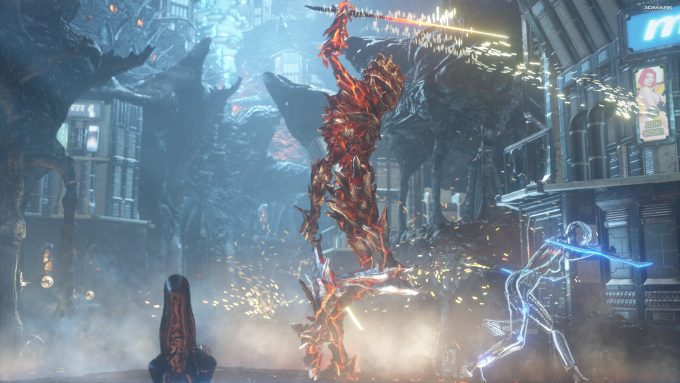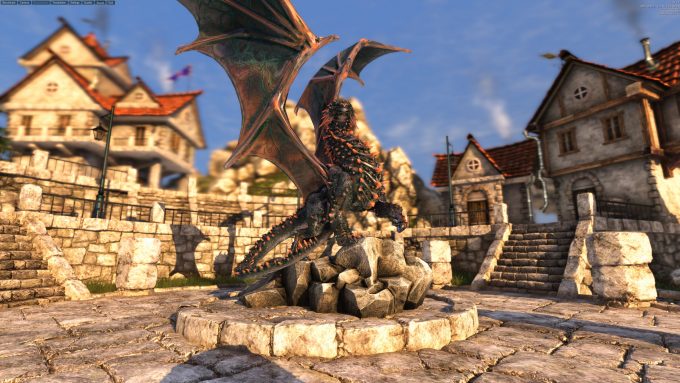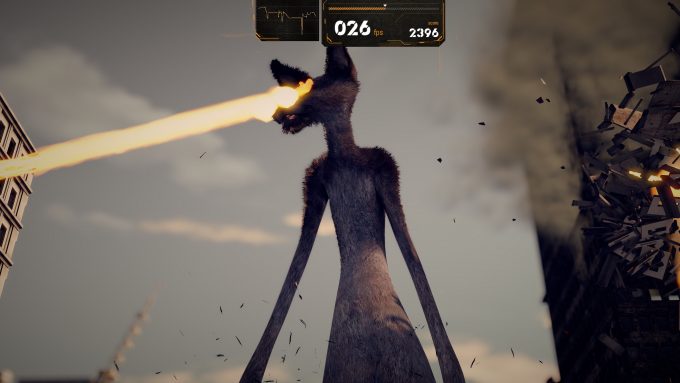- Qualcomm Launches Snapdragon 4 Gen 2 Mobile Platform
- AMD Launches Ryzen PRO 7000 Series Mobile & Desktop Platform
- Intel Launches Sleek Single-Slot Arc Pro A60 Workstation Graphics Card
- NVIDIA Announces Latest Ada Lovelace Additions: GeForce RTX 4060 Ti & RTX 4060
- Maxon Redshift With AMD Radeon GPU Rendering Support Now Available
Polaris, Boosted: A Look At PowerColor’s Radeon RX 570 & RX 580

The hype leading up to the launch of AMD’s Radeon RX Vega is hard to ignore. In fact, it’s the kind of hype that every company dreams of. Given that, a release of an RX 500 series that doesn’t contain Vega could come as a surprise, or even a rude awakening. But, if you’ve been in the market for a new GPU that won’t break the bank, both the RX 570 and RX 580 are well worth checking out.
Page 5 – Tests: Futuremark 3DMark, Unigine Heaven & Catzilla
Futuremark 3DMark
I don’t like to overdo “time demos”, but I do love running some hands-off benchmarks that you at home can run as well (provided you have a license) so that you can accurately compare your performance to ours. It goes without saying that any synthetic testing would have to include Futuremark, and in particular for high-end cards, 3DMark’s Fire Strike test.
3DMark includes a number of different game tests, but today’s graphics cards are so powerful, the Fire Strike test is really the only one that makes sense. At 1080p, even modest GPUs can deliver decent performance. A great thing about Fire Strike is that the official tests encompass three different resolutions, including 4K, making it perfect for our testing.
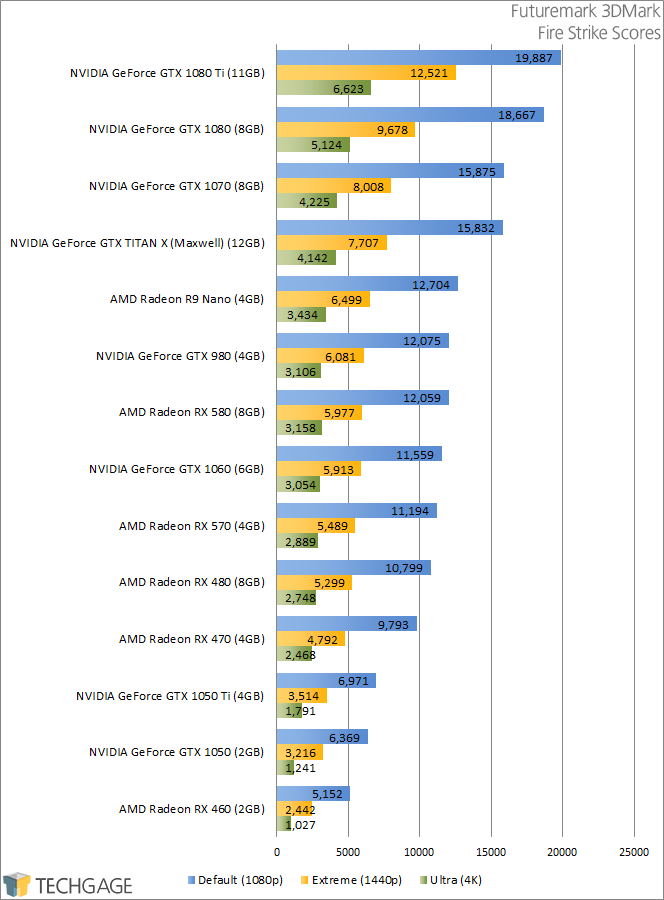
Throughout this article, we’ve seen the RX 580 and NVIDIA’s GTX 1060 flip-flop their strengths. In 3DMark, though, the RX 580 edges out the 1060 ever-so-slightly. Now, to be fair, the RX 580 was benchmarked with a brand-new driver while NVIDIA’s was benchmarked last summer, but ultimately, both cards are similar in performance, without one having a real advantage over the other (at least where pure performance is concerned).
Unigine Heaven
It’s hard to tell at this point if Heaven is ever going to see a new update, as it’s been quite a while since the last one, but what we have today is still a fantastic benchmark to run. That’s thanks to the fact that it’s free, an also because it can still prove so demanding on today’s highest-end GPUs. It’s also a great test for tessellation performance, as it lets you increase or decrease its intensity. For testing, I stick with ‘Normal’ tessellation.
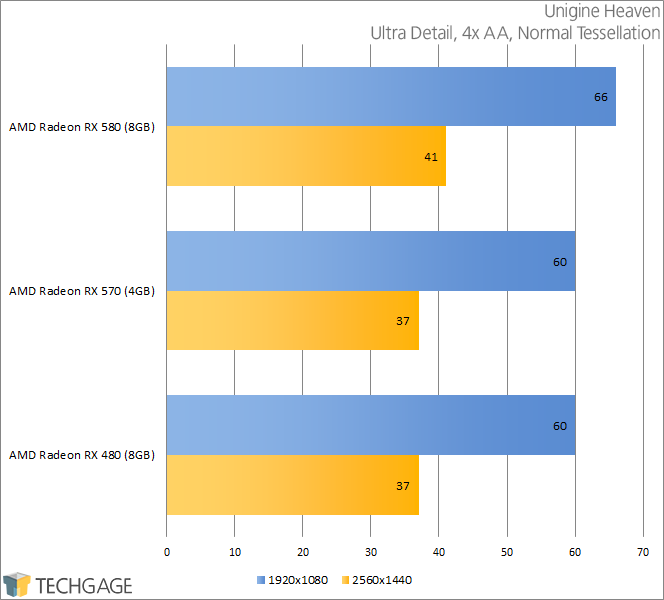
Because I hadn’t tested our entire suite of GPUs at 1080p and 1440p in Unigine, I opted to just test the top three RX series cards alone. Interestingly, the RX 570 performed the exact same as the RX 480, but that’s not a result we’ve seen anywhere else. The RX 580 gains a notable 10% lead, but whether that gain will be worth the extra money is up to you (~$30 premium at minimum).
Catzilla
Meow hear this: there’s a new benchmark in town that promises to be purrfect for testing 4K resolutions. So, that’s just what I’ve used it for. The test consists of a cat innocently roaming a street until chaos ensues. Before long, this feline is mowing down buildings with its laser eyes, destroying GPU performance at the same time.
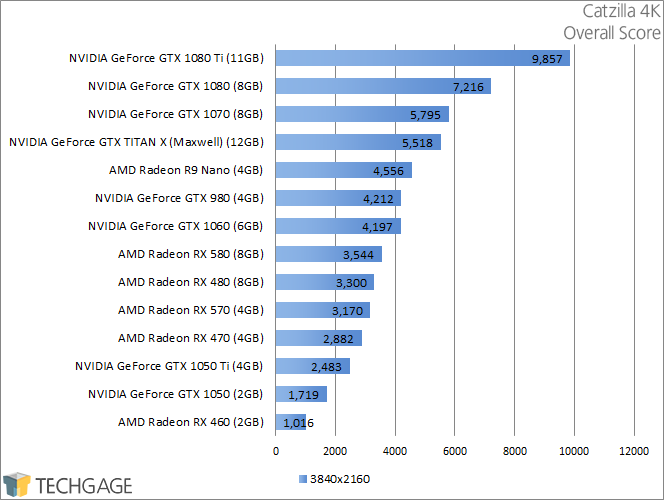
Finally, Catzilla backs up most of the results we’ve seen up to this point. The RX 470 – RX 580 cards scale exactly as we’d expect them to, although unlike with 3DMark, the GTX 1060 managed to best the RX 580 here. Cat fight!
Support our efforts! With ad revenue at an all-time low for written websites, we're relying more than ever on reader support to help us continue putting so much effort into this type of content. You can support us by becoming a Patron, or by using our Amazon shopping affiliate links listed through our articles. Thanks for your support!




